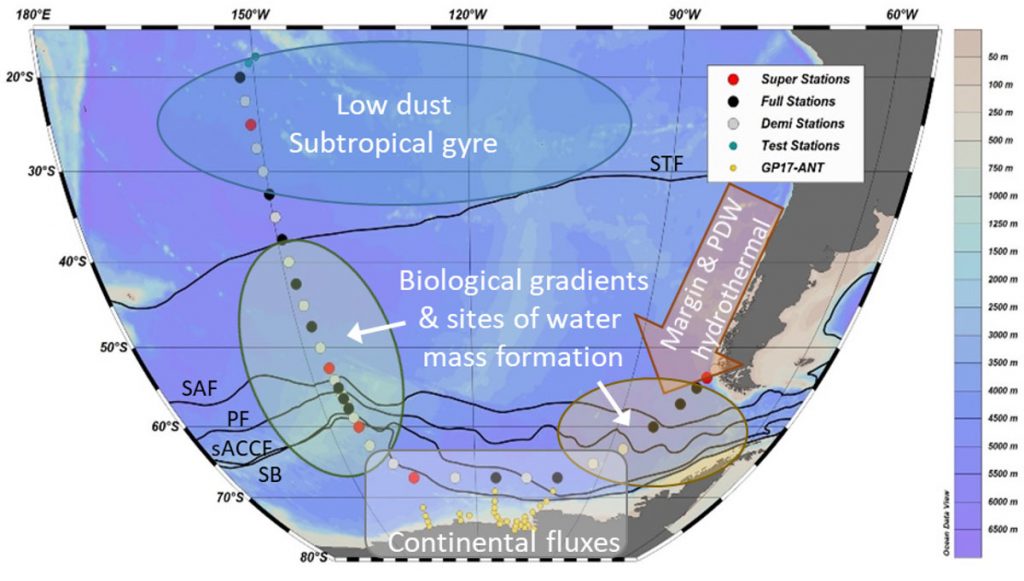Departure of the US GEOTRACES cruise towards the Southern Ocean
GEOTRACES cruise GP17-OCE will depart from Papeete, Tahiti (French Polynesia) on Dec 1st, heading south towards the Antarctic Circumpolar Current and the Southern Ocean. The cruise will arrive in Punta Arenas, Chile on Jan 25th, having crossed several major ocean biomes and biogeochemical gradients. Sailing on the R/V Roger Revelle will be 34 scientists, mostly from the United States, led by cruise leaders Ben Twining, Jessica Fitzsimmons, and Greg Cutter. The GP17-OCE section is supported by the US National Science Foundation.
The transect will first sample the South Pacific Subtropical Gyre, home to some of the most oligotrophic surface waters in the global ocean and an ideal end-member for nutrient limitation and low Aeolian dust inputs. Cross the subtropical front, the cruise will moved in sub-Antarctic waters that play key roles in global carbon and nutrient cycling. The project will characterise the impacts of primary production on the composition of subsurface water masses that subduct and travel towards the equator. Moving further south, the team will cross the Polar Front and encounter high nutrient Antarctic water, hopefully soon after the spring bloom. The transect will then traverse eastward along 67°S, crossing regions of upwelling Circumpolar Deep Water and several ACC fronts. The cruise will finish with a northeast transect onto the Chilean shelf, crossing additional sites of intermediate watermass formation and intersecting the southward flow of Pacific Deep Water, thought to be an important source of trace metals to the Southern Ocean. The cruise will be extended to Antarctic coastal waters and the rapidly changing Amundsen Sea during the second leg of the GP17 section (GP17-ANT) in 2023-2024.
During the cruise, data, imagery and video will be captured to develop a 360° virtual reality experience, “Sailing with GEOTRACES”, intended to provide general audiences a window into the experience of conducting research at sea. Modules will include visualisations of shipboard experiences, an exploration of GEOTRACES science, and introduction to the logistics of conducting trace element research in remote ocean regions. The VR modules will be available on the international GEOTRACES website, as well as through presentations at museums and classrooms in the US.
Follow this cruise on Twitter (@geotraces_gp17) and Instagram (@geotraces_GP17oce).
You can also follow the blog from Dr. Ryan Woosley about his work on board of the cruise: http://rwoosley.scripts.mit.edu/WoosleyLab/mcp-blog/

